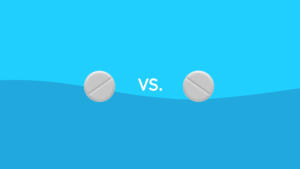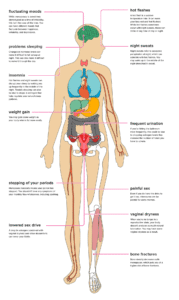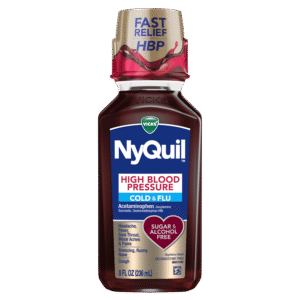Peptic Ulcer Disease as a Cause of Chest Pain
Understanding Peptic Ulcer Disease as a Cause of Chest Pain
Peptic Ulcer Disease (PUD) is a common gastrointestinal condition that can sometimes cause symptoms similar to those of angina or even a heart attack. In fact, many people with acute peptic ulcer symptoms mistakenly call emergency services, believing they are experiencing a cardiac emergency. This overlap in symptoms can be confusing, but it’s important to understand how PUD can lead to non-cardiac chest pain (NCCP), especially when it’s associated with conditions like gastroesophageal reflux disease (GERD).
What Is Peptic Ulcer Disease?
Peptic ulcers are open sores that form in the lining of the stomach or the duodenum (the first part of the small intestine). These ulcers can cause significant pain and discomfort, often accompanied by additional symptoms such as bloating, nausea, vomiting, heartburn, and a sour taste in the mouth.
The primary cause of peptic ulcers is an infection with Helicobacter pylori (H. pylori), a bacteria that disrupts the protective mucus lining of the stomach. The overuse of nonsteroidal anti-inflammatory drugs (NSAIDs), such as ibuprofen and naproxen, is another common cause. Peptic ulcer pain can typically be alleviated by eating, but it may worsen when lying down, smoking, or consuming alcohol or caffeine.
How Peptic Ulcer Disease Leads to Chest Pain
The chest pain associated with PUD is often sharp or burning, usually felt in the upper abdomen, but it can radiate to the chest, mimicking the symptoms of a heart attack or angina. This type of pain is often referred to as non-cardiac chest pain (NCCP), which is characterized by recurring pain behind the breastbone that is not linked to heart issues.
NCCP can be triggered by various factors, including acid reflux (common with both PUD and GERD), severe stress, or anxiety attacks. The backflow of stomach acid can cause spasms in the esophagus, which in turn irritates nerves that may send pain signals to areas like the chest, neck, back, or left arm. The discomfort can feel similar to that of a heart attack, leading to confusion and unnecessary concern.
Peptic Ulcer vs. Angina: How to Differentiate the Two
While chest pain from peptic ulcer disease can resemble that of a heart attack, there are distinct differences:
Peptic Ulcer Pain:
-
Sharp, burning, or stinging pain
-
Pain often starts after eating
-
Worsens when lying down
-
Accompanied by bloating, nausea, and a sour taste
-
Eases with antacids
Angina:
-
Feels like chest pressure, heaviness, or tightness
-
Occurs suddenly or with exertion
-
Worsens with physical activity
-
Not accompanied by bloating or taste changes
-
Does not improve with antacids
Despite these differences, it can be difficult to distinguish between the two based on symptoms alone. In cases of doubt, medical tests like endoscopy, X-rays, and H. pylori testing are crucial for an accurate diagnosis. If heart disease is suspected, additional tests like a stress test may be necessary to rule out cardiac issues.
The Causes of Non-Cardiac Chest Pain in Peptic Ulcer Disease
The exact cause of NCCP related to PUD is not entirely understood, but it likely involves both physical and emotional factors. Acid reflux, common in those with PUD or GERD, can cause the esophagus to spasm, leading to heightened pain sensitivity. Chronic acid reflux can also alter nerve signals from the esophagus, amplifying pain sensations that may be misinterpreted as heart-related.
Furthermore, stress can exacerbate the condition, as the body releases cortisol, which increases heart rate and potentially intensifies the perception of chest pain. During these times, it is easy to mistake PUD-induced discomfort for a heart attack.
How Peptic Ulcer Disease Is Diagnosed
To distinguish peptic ulcer disease from other causes of chest pain, doctors may perform several diagnostic tests:
-
Endoscopy: A procedure that allows doctors to examine the upper digestive tract and identify ulcers or bleeding.
-
X-rays: To evaluate the digestive system and detect ulcers or other abnormalities.
-
H. pylori testing: To confirm the presence of the infection responsible for many peptic ulcers.
If heart disease is a concern, a stress test or other cardiac evaluations may be recommended to rule out angina or heart attack.
Treatment for Peptic Ulcer Disease and Chest Pain
If peptic ulcer disease is confirmed as the cause of NCCP, treatment typically includes:
-
A bland diet to reduce irritation
-
Medications like proton pump inhibitors (PPIs), H2 blockers, or antacids to reduce stomach acid production
-
Bismuth subsalicylate (e.g., Pepto-Bismol) to protect the stomach lining
-
Antibiotics to eradicate H. pylori infection in the case of an active infection
In rare cases, surgery may be considered if ulcers do not heal with medical treatment.
Conclusion
While chest pain can often be a sign of a serious condition like a heart attack, in some cases, it may be caused by non-cardiac issues like peptic ulcer disease. Understanding the differences in symptoms, along with appropriate medical testing, is crucial for accurate diagnosis and effective treatment. Always seek medical attention if you experience chest pain, as prompt evaluation can ensure the best outcome.



